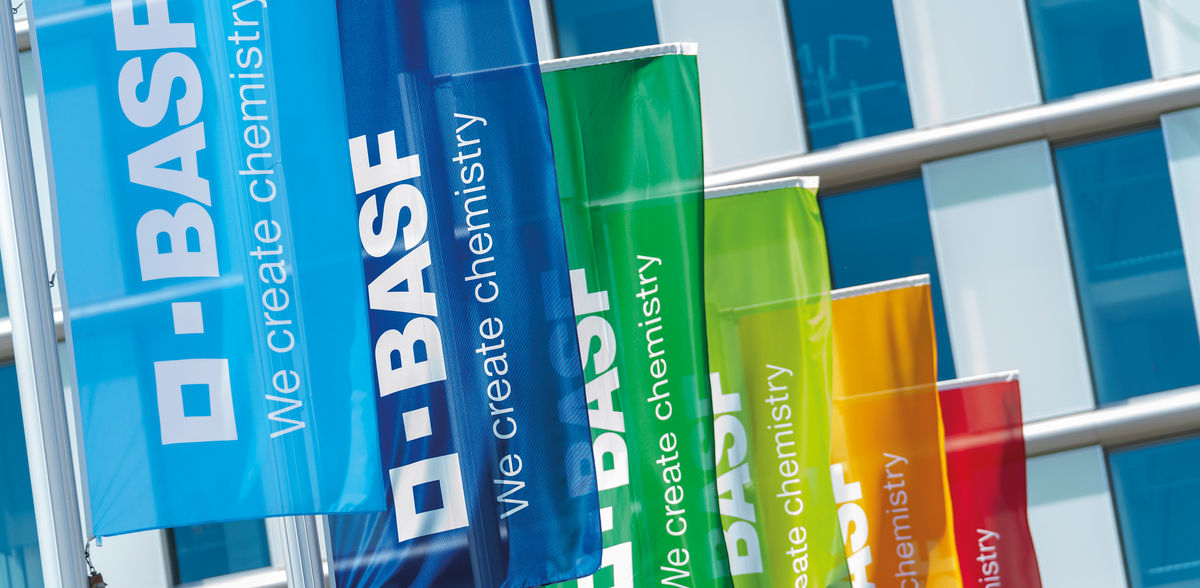BASF provides update on implementation of corporate strategy and commits to targets for Scope 3.1 emissions
Introduction of differentiated steering concept and new financial key performance indicators
BASF is taking a further step on its path to net zero and has committed to targets for Scope 3.1 emissions. The announcement was made during an update for investors and analysts in Ludwigshafen at which Dr. Martin Brudermüller, Chairman of the Board of Executive Directors of BASF SE, and Dr. Dirk Elvermann, Chief Financial Officer, reported on progress in the implementation of the corporate strategy announced in 2018. Brudermüller and Elvermann outlined how the company is delivering on the priorities for the use of cash laid out in the strategy and also presented a new differentiated approach to steering businesses for more profitability.
Delivering on priorities for the use of cash
BASF’s corporate strategy is based on organic growth. Between 2018 and 2022, the company allocated around 60 percent of its spending to capital expenditures and research and development.
Brudermüller emphasized the high importance of shareholder returns and an attractive dividend for BASF’s Board of Executive Directors. “BASF has increased the dividend in three of the past five years and kept it stable at the respective prior year level in 2020 and in 2022 due to the challenging framework conditions,” he said. The total dividend payout since 2018 amounts to €15.8 billion, and the average dividend yield is 5.6 percent per year. Over the last decade, BASF’s attractive dividend payouts have been supported by the company’s strong cash generation. Between 2013 and 2022, average cash flows from operating activities amounted to €7.7 billion per year and average free cash flow amounted to €3.4 billion per year.
Through its continuous portfolio management, BASF has focused its portfolio toward innovative growth businesses. In the past five years, the company has divested businesses with sales of €5 billion and acquired businesses with sales of €4 billion.
Differentiating the steering of businesses for more profitability
The transformation of BASF into a customer-focused organization through the empowerment of the businesses to better serve the needs of customers has been the key element of the strategy presented in 2018. Since then, BASF has taken various measures to increase the steering abilities of the individual businesses.
“The company is now going another step and aims to further increase BASF’s competitiveness by adapting the steering of its individual businesses,” said Elvermann. “We are combining the benefits of a more differentiated approach to steering individual businesses with the advantages provided by the Verbund and our setup as an integrated company,” he added.
With differentiated steering, businesses will further adjust their specific business models and processes. This will be supported by adapted process structures, IT systems and governance frameworks. Businesses that are less deeply integrated into the Verbund will gain more space to meet the needs of their specific customer industries while keeping the benefits of an integrated company. This approach will apply to Battery Materials and Coatings within the Surface Technologies segment as well as to Agricultural Solutions.
BASF will continue to manage its Verbund businesses – comprising the Chemicals, Materials, Industrial Solutions and Nutrition & Care segments – along value chains and will generate value through the efficient use of resources, bundling of demand and synchronized, deeply integrated production. Looking forward, value chain management will become even more crucial because the company will attach sustainability attributes such as the product carbon footprint or biomass or recycled content to its products.
As of January 2024, BASF will change the key performance indicators (KPIs) that it uses to steer BASF Group. In the short and midterm, the company will put stronger emphasis on EBITDA before special items and cash flows. The company will continue to use ROCE as a mid-term steering KPI to keep focus on asset profitability.
With differentiated steering, BASF will also introduce new KPIs for its operating divisions. Businesses with a focus on a single industry will be more stringently steered by industry specific KPIs, while businesses more deeply integrated into the Verbund will be steered along value chains.
BASF will place a strong focus on cash generation across all its businesses. Furthermore, the following EBITDA before special items margins are targeted:
- Verbund businesses: 17 percent over the cycle
- Battery Materials: 30 percent or higher (excluding metals) by 2030
- Coatings: 15 percent or higher in the midterm
- Agricultural Solutions: 23 percent or higher in the midterm
In line with these changes to the steering approach, BASF will also adapt its external reporting and forecasting. As of the BASF Report 2023, to be published on February 23, 2024, BASF will forecast EBITDA before special items and free cash flow at Group level, instead of giving an outlook for sales, EBIT before special items and ROCE. Furthermore, at segment level, the company will also provide a forecast for EBITDA before special items and cash flow.
Taking the next step on the path to net zero
BASF also provided investor representatives with an update on its progress on the path to climate neutrality, starting with the original goal of ensuring climate-neutral growth in the 2018 strategy. In March 2021, BASF increased this ambition and set reduction targets for Scope 1 and 2 emissions: a 25 percent reduction by 2030 compared with 2018 and net zero by 2050. To achieve these goals, BASF is focusing on the use of renewable energies and technologies for carbon abatement.
In view of the progress the company has made in obtaining reliable primary data for the emissions associated with purchased raw materials, BASF is now confident that it has a sufficiently solid foundation to set targets for reducing its Scope 3.1 emissions. By 2030, BASF aims to reduce its specific Scope 3.1 emissions by 15 percent compared with 2022 across the portfolio – from 1.57 to 1.34 kilograms of CO2 per kilogram of raw material bought.
“We have defined a specific target because our focus is on improving the product carbon footprint of our sales products, which we calculate in kilograms of CO2 per kilogram of BASF product sold,” Brudermüller said. “Our ambitions and efforts in the short and long term are clear: BASF will work with both customers and suppliers to find pragmatic solutions that are both cost-efficient and good for the environment. Our long-term ambition is also clear: We are committing to achieving net-zero Scope 3.1 emissions by 2050,” he added.




























































